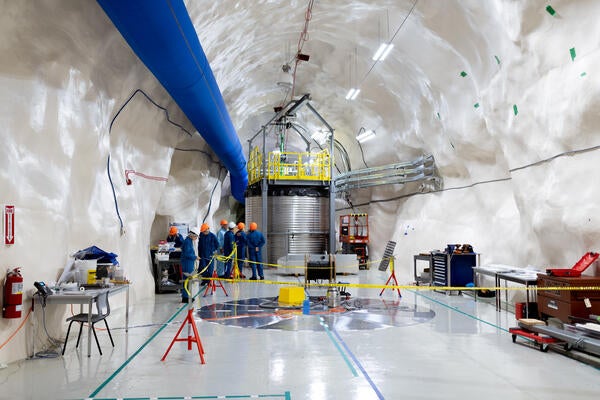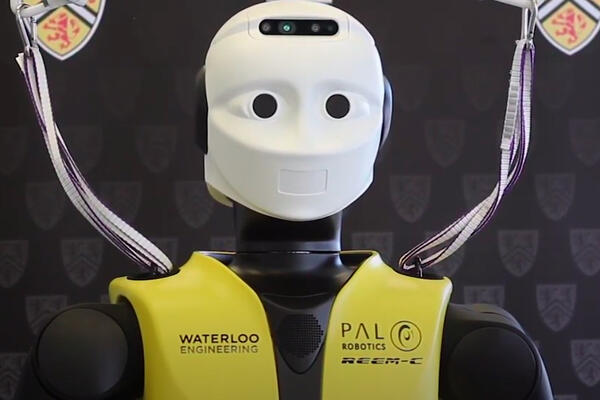
Climate change solutions are within our grasp, professor discovers
As a conflict resolution expert with an interest in climate change, Hipel is accustomed to asking tough questions and unearthing some surprising results

As a conflict resolution expert with an interest in climate change, Hipel is accustomed to asking tough questions and unearthing some surprising results
By Kira Vermond Faculty of Engineering As he gave talks on climate change and energy use while in Asia, Keith Hipel often put a seemingly simple query to his audiences.
As he gave talks on climate change and energy use while in Asia, Keith Hipel often put a seemingly simple query to his audiences.
“What’s the worst possible car you could drive if you lived in Japan?” the University of Waterloo systems design engineering professor would ask.
The answers were predictable, typically involving the word ‘diesel’ and large, gas-guzzling vehicles.
But it turns out it was a trick question.
“It’s actually the electrical car,” says Hipel, months after returning to Canada. “When you plug it into the wall to charge it in Japan, you’re actually getting electricity that’s made from coal or some type of fossil fuel. In other words, it’s a complete waste of money to even buy an electrical car if you live in that situation.”
As a conflict resolution expert with an interest in climate change, Hipel is accustomed to asking tough questions and unearthing some surprising results.
During more than 40 years as a Waterloo Engineering student, faculty member and researcher, he has taught thousands of students, garnered himself nearly three dozen research and teaching awards, and served as president of the Academy of Science within the Royal Society of Canada.
With that kind of illustrious background, it’s little wonder Hipel was made co-chair of an eight-person expert panel on energy use and climate change. The group wrote a groundbreaking report, Technology and Policy Options for a Low-Emission Energy System in Canada.
Since it was published in late 2015, the report has been used to give industry and government new, clear-eyed insight into the complex issues surrounding energy use. Hipel has personally placed a copy into Governor General David Johnston’s hands.
The report was drafted at the behest of Canada-based Magna International Inc., one of the largest car part manufacturers in the world, to provide a clear understanding of what industry can do to address climate change.
The company asked the Council of Canadian Academies to assemble an expert panel to conduct an independent, evidence-based assessment. And it was important to gather some of the best minds to tackle the issue.
Hipel believes he was chosen for the multi-disciplinary panel –which featured backgrounds in economics, public policy, engineering, business, sociology and energy systems – in part due to his work dealing with conflict resolution.
As the project progressed, however, any dissension became consensus.
“Even though we came from many different backgrounds, we had 100-per-cent agreement among all eight panel members,” he says. “When you focus on a problem to solve, that makes you forget your particular biases and political leanings.”
In the end, the report focused on three key findings:
Canada actually already has the technology to achieve major emission reductions. It’s commercially available and the costs are manageable, too. Think nuclear technology, hydroelectric power, wind energy and solar cells. For instance, Canada could double the amount of hydroelectric power it creates, Hipel explains.
“All these things are available on the shelf now,” he says, noting that the panel still encouraged continued research. “Without even doing any further research, we can solve the problem.”
As the Japanese e-car story shows, low-emission electricity is the foundation for low-emission energy systems. Without a de-carbonized grid, individual energy users and even industry are hard-pressed to make any meaningful changes and have an environmental impact.
A transition to low-emission energy is achievable with the right combination of stringent and flexible policies, or what Hipel calls “the toughest problem of all.” Government policies need to be stringent so countries can meet their goals, but flexible enough that they can find solutions to fit their unique geographic and cultural needs.
He looks to British Columbia’s carbon taxes, which have resulted in a 17-per-cent reduction in carbon release, while other provinces consider a “cap and trade” model. What’s needed? A harmonized, economy-wide set of policies.
Perhaps what surprised Hipel most about the research process was how straightforward the issue actually is. He likens that discovery to looking at a painting up close, then backing up to see the whole picture.
“When you step back and squint your eyes, you see the harmony or the artist’s message,” he says. “Well, here we looked at climate change from a distance and discovered it’s a fairly simple problem. We know the technologies and the harmonized policies. So now we just have to follow through.”

Read more
Eight Waterloo researchers receive $25,000 each to develop health-tech solutions for Grand River Hospital, St. Mary’s General Hospital, Cambridge Memorial Hospital and the KW4 Ontario Health Team

Read more
New collaboration will allow quantum researchers to study effects of solar radiation on quantum computing

Read more
New Waterloo Engineering-led research quickens the response time for robots to react to human conversation
Read
Engineering stories
Visit
Waterloo Engineering home
Contact
Waterloo Engineering
The University of Waterloo acknowledges that much of our work takes place on the traditional territory of the Neutral, Anishinaabeg and Haudenosaunee peoples. Our main campus is situated on the Haldimand Tract, the land granted to the Six Nations that includes six miles on each side of the Grand River. Our active work toward reconciliation takes place across our campuses through research, learning, teaching, and community building, and is co-ordinated within the Office of Indigenous Relations.